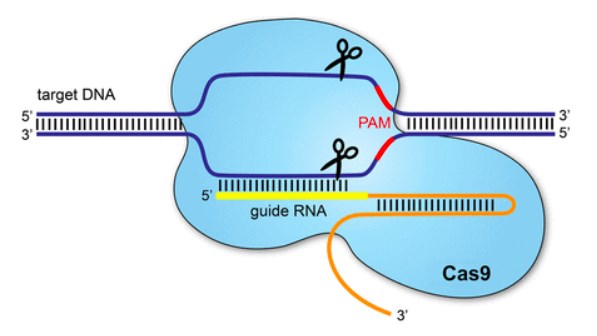CRISPR/Cas Nuclease
What Is CRISPR/Cas Nuclease?
Clustered Regularly Interspaced Short Palindromic Repeat (CRISPR) systems, which form an adaptive immune system in bacteria, have been modified for genome engineering. CRISPR is a technology that can be employed to edit genes. Moreover, CRISPR technology has the potential to transform medicine and make us not only treat but also prevent many diseases.
Prior to CRISPR, genome engineering approaches transcription-activator-like effector nucleases (TALENs) required scientists to design and generate a new nuclease pair for every genomic target. Nowadays, due to its comparative simplicity and adaptability, CRISPR has rapidly become the most popular genome engineering approach. CRISPR is being employed for all kinds of other purposes too, from fingerprinting cells and logging what happens inside them to directing evolution and creating gene drives.
The core of CRISPR is the "Cas" proteins found in bacteria, where they help defend against viruses. CRISPR-associated (Cas) nucleases are furnishing transformative technologies for genome editing and functional genomics. The Cas9 protein is the most commonly used by scientists. They recognize their substrate sequence via a Protospacer Adjacent Motif (PAM) sequence and base-pairing of the target sequence by a guide RNA (gRNA) borne by the nuclease. Upon target recognition, Cas nucleases induce a double-strand break, following which the cell's repair machinery can be co-opted to alter the genomic sequence.
 Figure 1. The CRISPR/Cas 9 system. (Redman, 2016)
Figure 1. The CRISPR/Cas 9 system. (Redman, 2016)
How Does CRISPR Cas9 Work?
CRISPR systems are two components: a guide RNA (gRNA or sgRNA) and a CRISPR-associated endonuclease (Cas protein). The former, gRNA, is a short synthetic RNA composed of a scaffold sequence necessary for Cas-binding and a user-defined-20 nucleotide spacer that defines the genomic target to be modified. Thus, one can change the genomic target of the Cas protein by simply changing the target sequence present in the gRNA. In terms of gRNA, it is a two components system consisting of the crRNA and tracrRNA. The crRNA targets the double-stranded DNA to be cut, and has a short region of homology allowing it to bind the tracrRNA. The tracrRNA provides a stem-loop structure which associates with Cas9 protein.
Applications
CRISPR was originally employed to knock out target genes in various cell types and organisms, but modifications to various Cas enzymes have extended CRISPR to selectively activate/repress target genes, purify specific regions of DNA, image DNA in live cells, and precisely edit DNA and RNA. Furthermore, the ease of generating gRNAs makes CRISPR one of the most scalable genome editing technologies.
- Gene knock out
CRISPR/Cas9 generates knockout cells or animals when co-expressed with a gRNA specific to the gene to be targeted. The purpose of gene knockout is to block gene function by disrupting its expression in the cell.
- Gene knock in
CRISPR/Cas9 is available to be used to introduce, or "knock in", new DNA sequences. Common modifications contain the introduction of a single nucleotide polymorphism (SNP), small tag, loxP, or a larger cassette such as a fluorescent protein.
- Gene activation and inhibition
In addition to functioning as a genome editing tool, CRISPR can also be used as a targeted delivery system for other functional proteins. A unique feature of Cas9 is its ability to bind target DNA independently of DNA cleavage.
- Genome-wide screens
The ease of gRNA design and synthesis, as well as the ability to target almost any genomic locus, make CRISPR the ideal genome engineering system for large-scale forward genetic screening. CRISPR can make highly specific, permanent genetic modifications that are more likely to ablate target gene function. It has already been used extensively to screen for novel genes that regulate known phenotypes, including resistance to chemotherapy drugs, resistance to toxins, cell viability, and tumor metastasis.
CRISPR/Cas9 makes it possible to correct errors in the genome and turn on or off genes in cells and organisms quickly, cheaply and with relative ease. This technology has lots of laboratory applications including the rapid generation of cellular and animal models, functional genomic screens and live imaging of the cellular genome. It has already been demonstrated that it can be used to repair defective DNA in mice curing them of genetic disorders, and it has been reported that human embryos can be similarly modified. Besides that, the potential clinical applications include gene therapy, treating infectious diseases such as HIV and engineering autologous patient material to treat cancer and other diseases are under development.
Reference
- Redman, M.; et al. (2016). What is CRISPR/Cas9? Archives of Disease in Childhood - Education and Practice. 101:213-215. Distributed under Open Access license CC BY 4.0, without modification.
